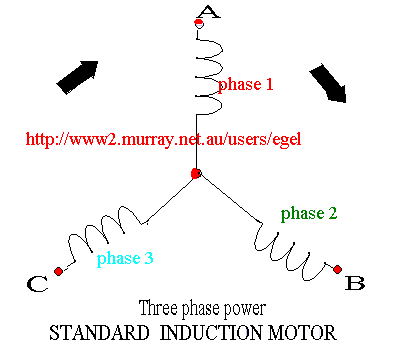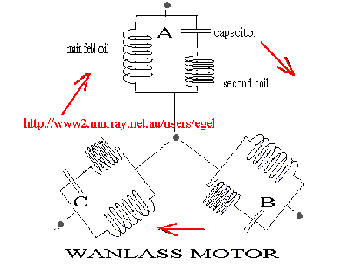


Below here is an energy conservation motor article I have in my procession by an unknown author describing an improvement to normal three phase AC induction motors and is reproduced for your enlightenment.
ARTICLE BEGINS
C.Wanlass- Conservation Motors.
The energy saving electrical motor developed by Chris Wanlass improves the operating economy of motors in several ways.
(a) Conventional electric motors lose efficiency by being unable to regulate the volume of iron laminations which become magnetised. In the Wanlass motor design the volume of iron Laminations and windings closely match the required pulling torque on the motor, with no unnecessary iron volume being magnetised.
The coil winding configurations around the laminations is also critical to this balanced EMF to magnetisation effect.

(b) By adding a second set of coils adjacent to each of the normal field coils this new type of motor avoids back EMF(per Lenz law).The addition of these second coils allows the normal current flow to be unrestricted by the back EMF and thus improve efficiency.
In the Wanlass motor the amount of copper wire in the second coil winding is much different than in the first coil windings.
Both sets of windings in conjuction with a capacitor, produce two different magnetic fields that compliment each other, rather than the usual conflict between input current and the back EMF.
The back EMF is shunted into the second coils a current, therefore causing less electricity to be required from the original source. The transfer of electrical flow from the first winding(s) to the second set smooths out the energy flow within the motor to generally increase efficiency and produce lower heat losses.
The addition of the capacitor in each of the second coil windings provides a current storage factor for higher starting torque plus producing the difference in the magnetic fields between the two field sets, as previously mentioned.
Experts who have examined the Wanlass motor design feel that it is extremely complex and involves an alteration of some basic motor design concepts. One engineer who examined the motor design said that "I wish I'd thought of it."
The Wanlas motor design has offered to a number of major motor manufactures in the US but negotiations have been halted due to some unreasonable demands made on Mr Wanlass on Licensing arrangements
